7 SEO friendly content writing techniques for better ranking in Google
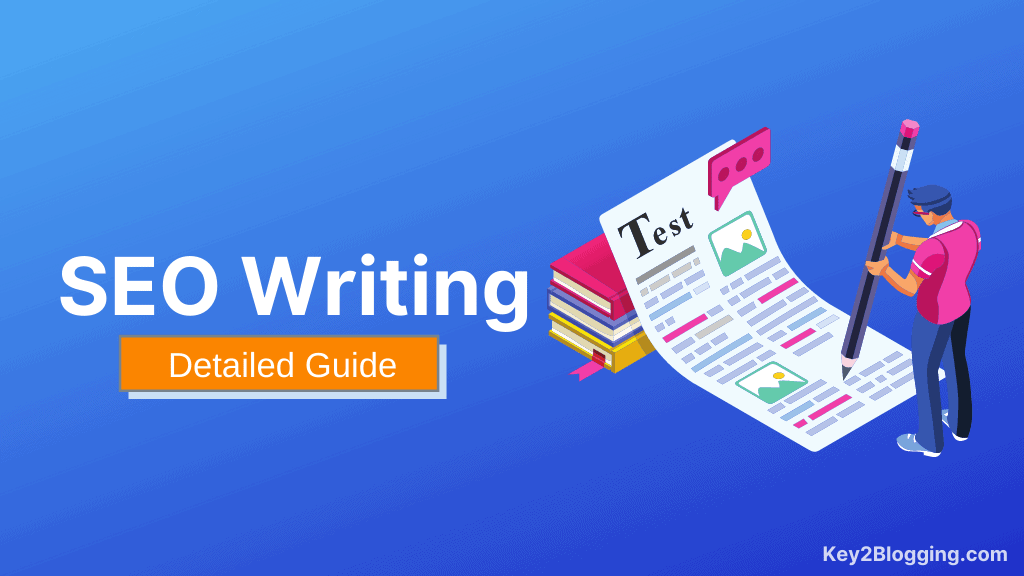
Do you want to write SEO friendly article for your Blog?
You can do that by learning some skills and implementing them in the right way.
Content is just information. And whatever you want to write about, chances are, you’re not the first.
Demand for content is growing day by day. Everyone can access the information with a single click, so it is very difficult and challenging to get noticed and produce profitable results.
So in order to do that, you need better content writing techniques that will lead to expected results so that your content can stand out from the rest.
So if you’re a blogger, freelance writer, or do any type of content writing, keep reading because I’m going to share with you a step-by-step framework to engage your audience, satisfy search engines, and as a result, drive consistent traffic and hopefully revenue.
Let’s start.
Whether you’re writing for your own site or for a client, you should have two objectives for your content.
✅ #1. The content should drive traffic to the site.
✅ #2. The content should engage those people so that they’ll turn into customers or be pushed further down the sales funnel.
So with those objectives in mind, let’s go through a simple 7-step process to achieve both of these goals. It will super helpful for new bloggers to improve their SEO content writing skills.

1. write about topics people are actually searching for.
Most people like to write about topics that excite them. And while that’s all well and good, these posts often have a short shelf life.
Now, when you create content around topics that people are searching for, then you get the opposite effect: free, passive, and consistent traffic that usually grows over time.
To find topics worth creating content on, you’ll need a keyword research tool to a) identify search demand, and b) understand the traffic potential of the topic, which is the total amount of monthly search traffic you could get if you were to rank high for that query.
So let’s say we have a site on DIY home improvement tutorials.
To find keywords to target, I’ll go to the Google search bar and search for some keywords broadly related to the topic, like “home improvement” “kitchen” and “living room“.
Next, I’ll look through the top 10 pages. You can use the whatsmyserp chrome extension for search volume and CPC data. And as you can see, there’s quite a bit of search demand around these topics as you can see from their search volumes.
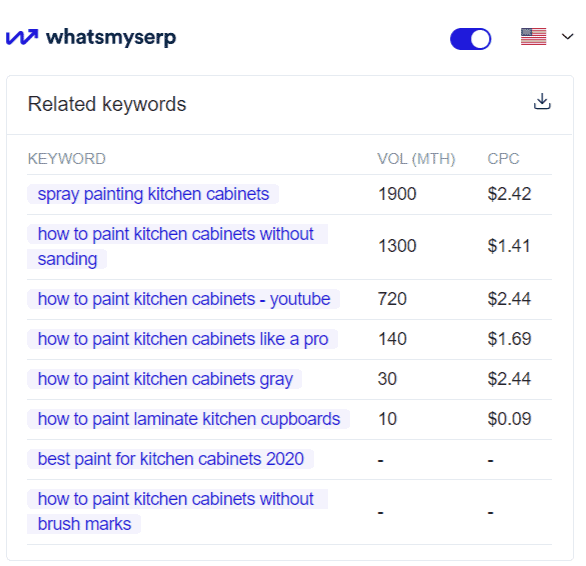
This topic on “how to paint kitchen cabinets” seems like a promising topic for our DIY home improvement site.
So this topic checks both boxes.
Now, it’s important to note that I’ve skipped a few steps here in the topic selection process, the main one being assessing ranking difficulty. But this tutorial is on content writing, so instead of expanding, you can read more on our keyword research tutorial.
Alright, so at this point, we have a topic to tackle, but just because you have a topic, it doesn’t mean you should write whatever you want. Remember, our goal is to rank at the top of Google so that you can get consistent traffic.
2. Search Intent
Search Intent is the main reason why a user types the query in the Google search bar. Common types of Search Intent include informational, commercial, navigational, and transactional.
This leads us nicely into the second step, which is to assess the “type” of content Google wants you to create. Google’s job is to deliver the most relevant results for any given query. And they do a pretty good job at this.
So, if you want to rank for a targeted topic, then you need to know the type of content already ranking in Google’s SERPs for that query. This is called search intent, which tells us about what searchers are looking for when they type the query.
The easiest way to do this is to just search for the query you want to rank for and look at the top-ranking results. And the three things you’re looking for are:
1.Сontent type
- blog posts
- product pages
- category pages
- landing pages
2. Content format
- how-to guides
- step-by-step tutorials
- list posts
- opinion editorials
- Reviews
- Comparisons
3. content angle
The unique selling point of the top-ranking pages.
So looking at the top 10 results for our query “how to paint kitchen cabinets” you’ll see that all of the pages are blog posts, so that would be the content type you should use too.
As for the format, the top two ranking pages are “how-tos,” which will be step-by-step tutorials. And for the content angle, there isn’t really a definitive one.
From my experience, matching content type and format are critical to rank at the top of Google, but angle usually isn’t as important unless there’s a clear theme among the top-ranking pages.
Now you know the importance of search intent in SEO content writing. so let’s move to the next step.
3.create a data-driven outline
Content is like a puzzle. There are a lot of different pieces and it’s very difficult to optimize without some kind of framework. Outlines are the most important part of the puzzle.
They help to form the base and all you need to do is fill in the missing pieces. They also help make sure you’re including all critical points worth communicating on the topic.
And from an SEO perspective, it can help you satisfy the algorithm and the audience.
The way Google determines a page’s placement in the search results is algorithmic. Meaning, you can’t pay to rank at the top of Google and your friend that works there can’t move your site to the top.
Their technology is able to understand words and the context they’re in. And the more context you give to search engines, the better your chances of ranking high.
The easiest way to find critical talking points is to look at some of the top-ranking pages and see if there are similar subtopics.
For our topic on how to paint kitchen cabinets, the top 2 pages both talk about choosing the right paint, preparation, priming the cabinets, painting the cabinets, and so on. So add these commonalities to your outline as subheadings.
Another thing you can do is use Ahrefs’ Content Gap tool to find common keyword rankings between the top-ranking pages.
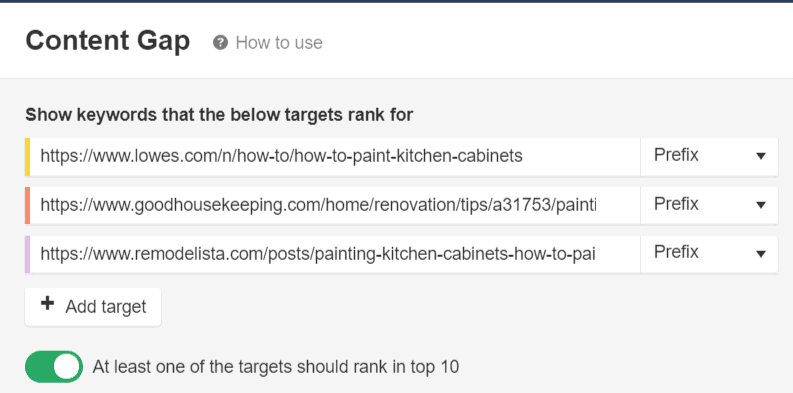
This can help you find more subtopics as well as jargon that might be relevant in adding context to your post.
Just enter the link of the top 2 or 3 relevant ranking results in the top section and then hit the search button.
As you can see, people are looking for the “wooden kitchen cabinets”, some are specifically looking for “kitchen cupboard paint”, and so on.
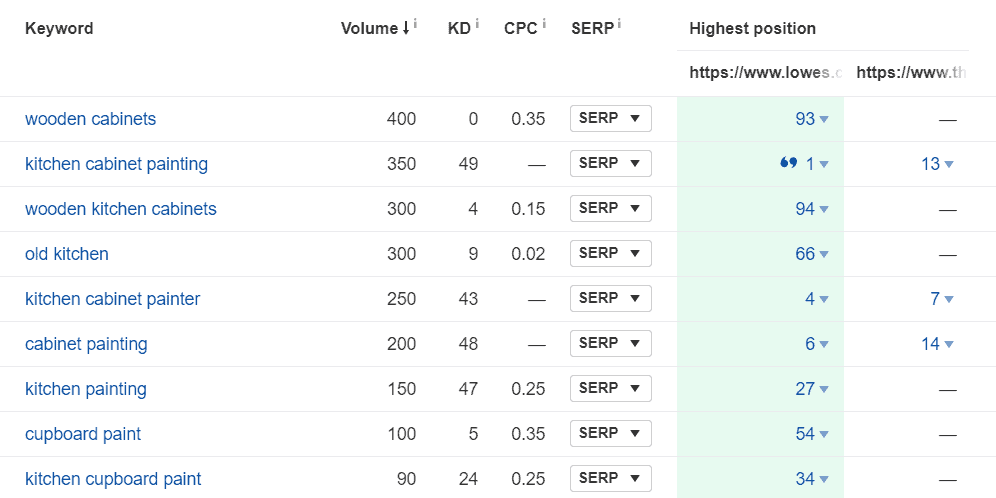
In this way, you can collect various keyword combinations people are searching for that keyword along with their keyword difficulty, monthly search traffic, and other data.
Don’t worry about stuffing these keywords in your post, but if you see something that could act as a subheading, it might be worth adding to your outline.
Just focus on writing something that’s succinct and actionable.
This will humanize the post and help you to focus on what matters most: helping readers.
4.Create a click-worthy headline.
A headline is important because it’s what stands between you and a visitor.
Its main purpose is to convince people to actually click on your result. Then it’s your content’s job to keep them reading.
Now, if you don’t know how to write good headlines, Here are a few simple formulas you can use.
You should include a positive or negative sentiment in your title for better CTR [Click through Rate]. Adding a number in the title also helps increase the CTR in the organic search result.
You can also mention the current year in the title. Don’t forget to add some power words in your title to attract readers to read your content.
Here are some examples of writing a catchy headlines.
▶ “How to Professionally Paint Kitchen Cabinets in Under an Hour”
▶ “7 Proven Ways to Decorate Your Home on a Tiny Budget”
▶ “10 Simple Ways to Renovate your Home on a Shoestring Budget”
▶ “10 Reasons You’re Unhappy with Your Home Decor”
Now, it’s important to note that while clickbait headlines might produce more clicks, keep in mind that if your content can’t deliver on the headline’s promise, then it’ll do more harm than good.
5. write a killer intro
Alright, the next step is to write a killer intro using the AIDA formula.
The introduction is potentially the most important part of your content. Its job is to hook your reader, tell them they’re in the right place, and convince them to keep reading.
Fortunately, there’s a tried and tested formula you can use called AIDA, which stands for attention, interest, desire, and action.
Let’s write a sample intro for our article on “how to paint kitchen cabinets”.
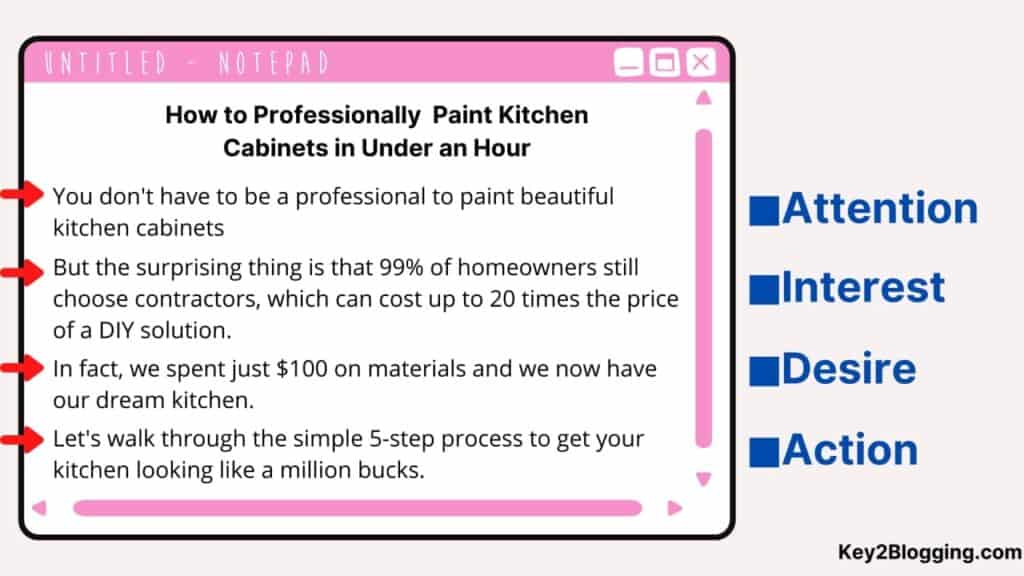
The first line should be dedicated to grabbing your audience’s attention.
So something like…
“You don’t have to be a professional to paint beautiful kitchen cabinets.”
This breaks a common belief the reader might have and thus, grabs their attention.
The next part is to pique their interest.
You can do this with stories, interesting facts, or anything else that might help connect with your audience in a personal way.
So let’s add to our intro.
“But the surprising thing is that 99% of homeowners still choose contractors, which can cost up to 20 times the price of a DIY solution.”
This line adds an interesting fact that also communicates that a) they’ll be unique by doing it themselves, and b) they’ll save a ton of money.
Alright, next up is desire.
This part is meant to show the reader how your content can solve their problem. And one of the best ways to do that is by showing them proof.
So let’s add on.
“In fact, we spent just $100 on materials and we now have our dream kitchen.”
Finally is action.
This can be done in the form of a “let’s get started” type of line or you can enhance the user’s experience using something like a table of contents.
So if I were to add on to our intro, I might say:
“Let’s walk through the simple 5-step process to get your kitchen looking like a million bucks.”
6. Make your content actionable and easy to digest.
So your outline should act as a nice skeleton for your post. And to add meat to those bones, you need to do two things.
#1. You want to make it as helpful as possible.
Meaning, if someone searches for “how to paint kitchen cabinets,” then they should be able to successfully do that with the help of your content.
This will all come down to your knowledge and expertise on the subject.
#2. You want to make it easy to digest and read. And this comes down to your communication and writing skills.
The best tip to make your content digestible is to keep your thoughts as succinct as possible.
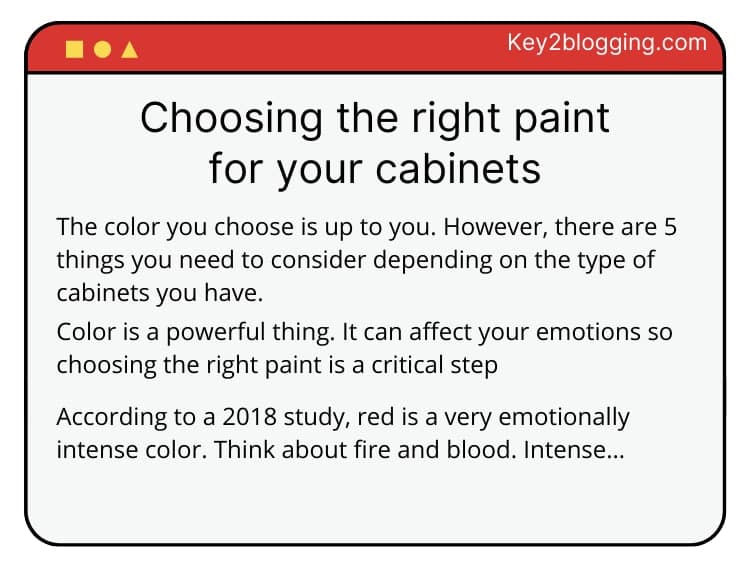
For example, if you’re writing a step on choosing the right paint for your cabinets, you might say something like “The color you choose is up to you. However, there are 5 things you need to consider depending on the type of cabinets you have.” Then add a list of 5 bullet points. Compare that to something like…
“Color is a powerful thing. It can affect your emotions so choosing the right paint is a critical step.
According to a 2018 study, red is a very emotionally intense color. Think about fire and blood. Intense…”
This doesn’t really help the user solve their problem. It just sounds like you’re trying to convince them to paint their cabinets red.
7. Improve Readability:
As for readability, you can do things like…
✅ Use headings and subheadings
✅ avoid walls of text [use short sentence]
✅ add images [if it helps clarify or visualize a point]
✅ use transitional sentences [which can help improve flow]
For example:
- As you know
- However
- Also
Bonus tips
Add an alt attribute to the image for better SEO results. Google does not understand the image. That’s why you have to add your keywords in the alt tag section. The search engine uses this data to understand the image and shows it up in the search result.
✅ Remove STOP words from Permalink: Avoid using stop words like “a”, “an”, “the”, “one”, “must” etc in your permalink as these words are generally ignored by the search engine.
For example: Let’s say the post title is “3 ways to monetize a Blog”
Here you can set permalink as “monetize-blog”
You can find the list of stop words here.
Now, after you’ve written your content, I highly recommend getting someone to give you unfiltered feedback.
This is something we do at key2Blogging for every single piece of content we publish whether that be a blog post, landing page, or video.
It helps us to always put our best foot forward and deliver no-fluff content that we hope will help our readers and viewers.
Now, the content aspect is a very important part when it comes to SEO.
Meaning, if you can’t get your content right, then you probably aren’t going to rank high for any meaningful keywords.
Also, there are times when you’ll nail your content, but you still can’t rank.
This often comes down to the level of competition, which totally depends upon the quality backlinks a website has.
So I highly recommend you to read those in our Blogging section and if you enjoyed this tutorial, then make sure to share and subscribe to our weekly newsletter for more actionable marketing tutorials.
And if you have any questions regarding content writing techniques, leave them in the comments below.
I’ll see you in the next tutorial.👍

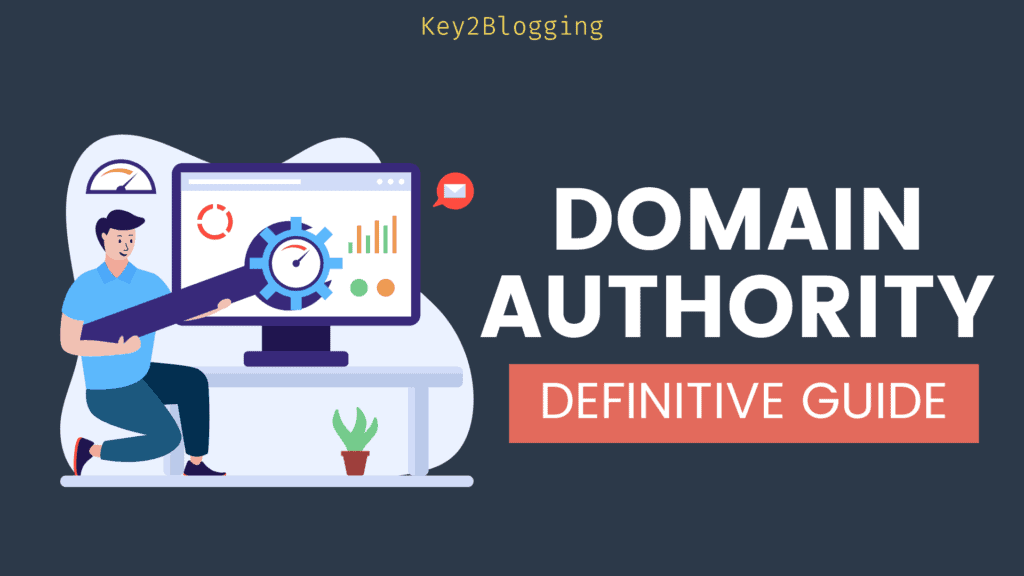
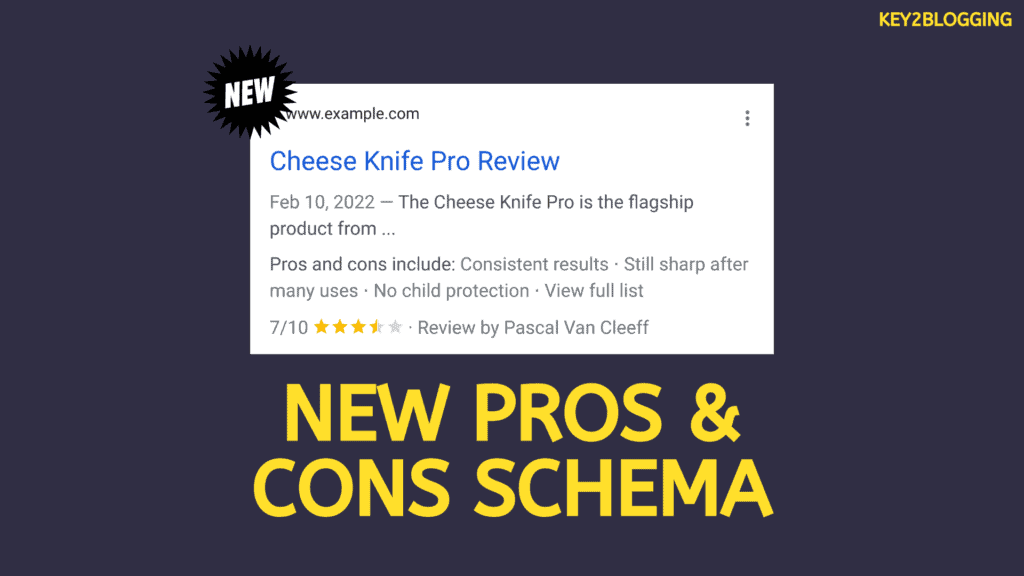
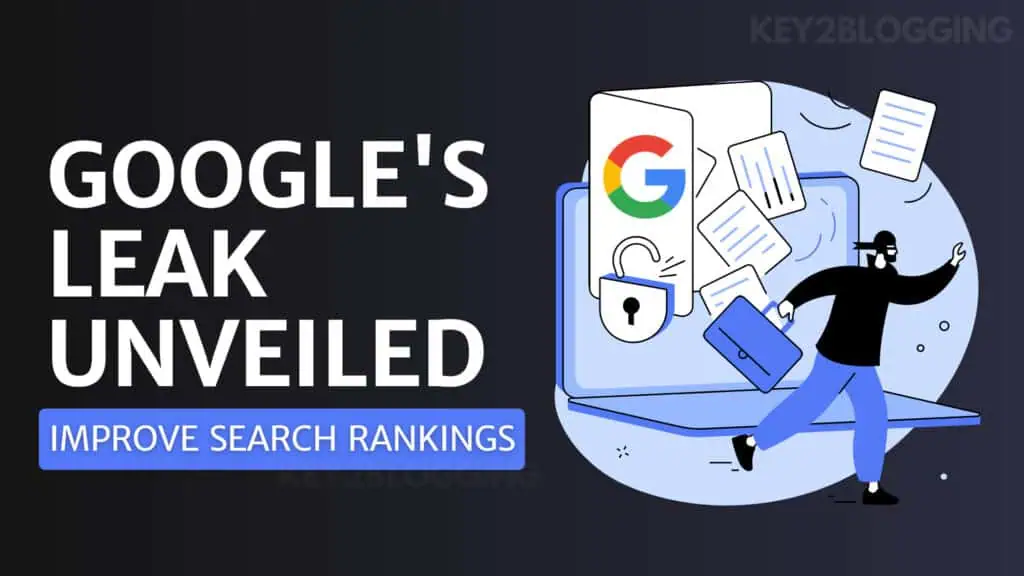


Thanks for your feedback. “Content is King” and this is still valid in 2021.
This article is a goldmine for all bloggers. Thank you so much, Abhishek 🙂
Great read, thanks for sharing your strategy.
Very informative